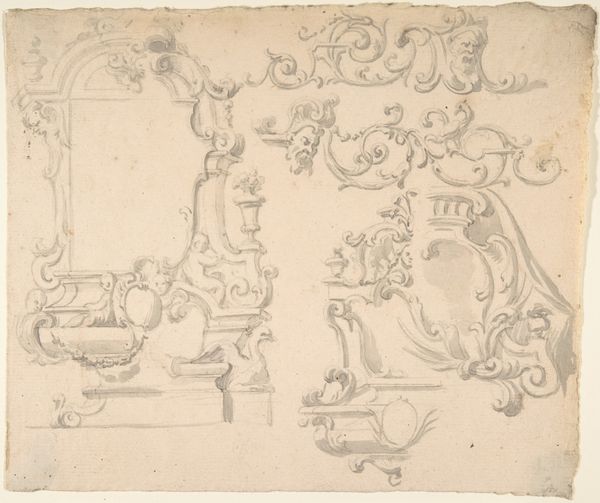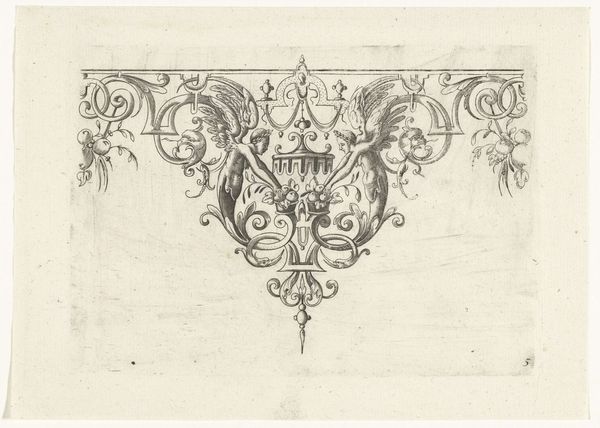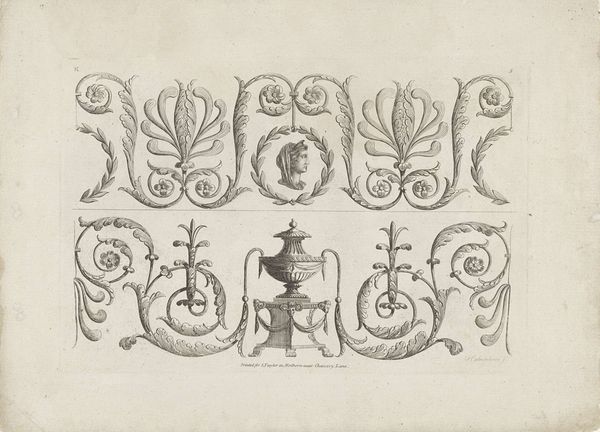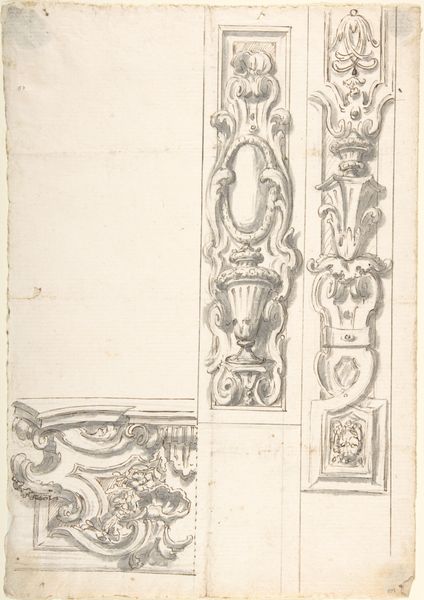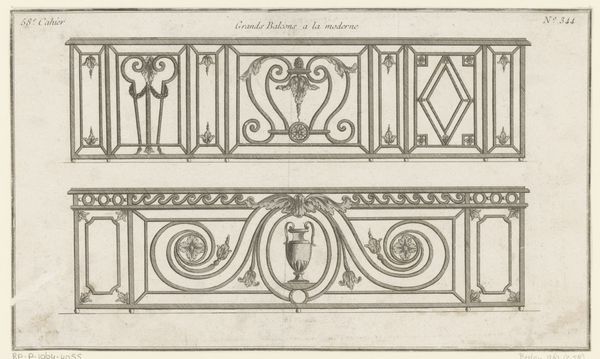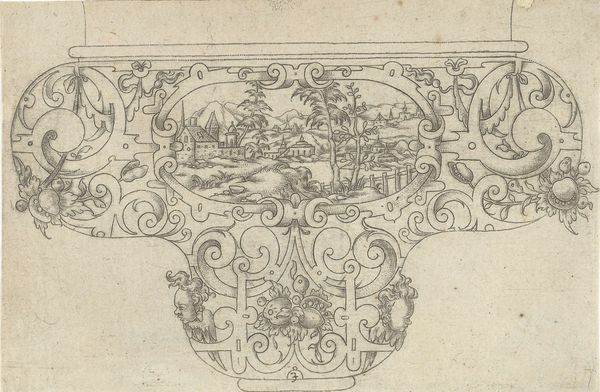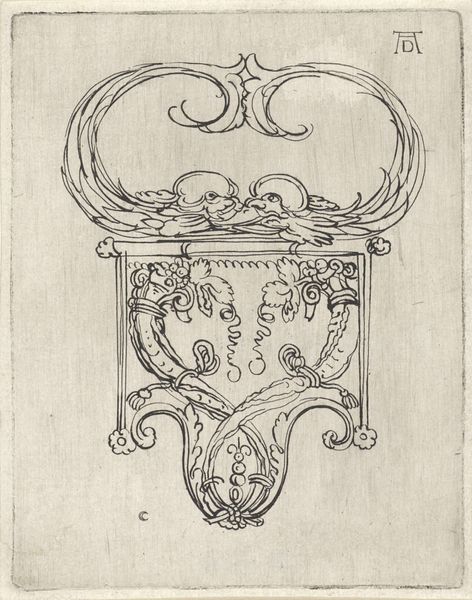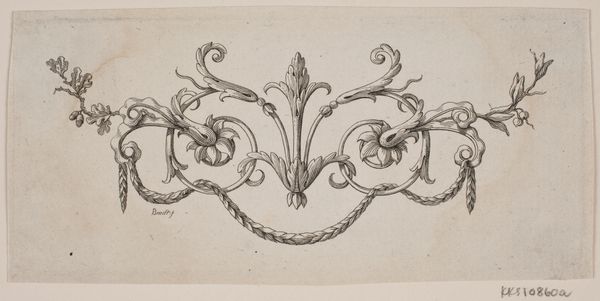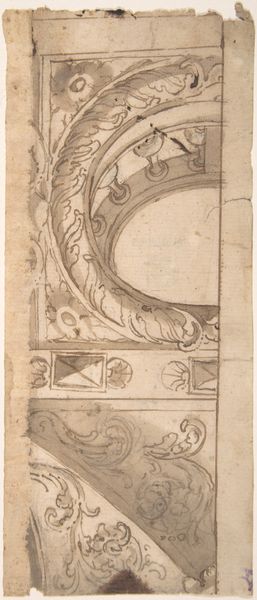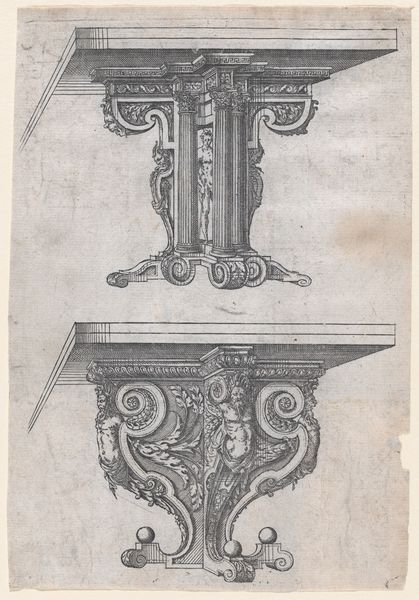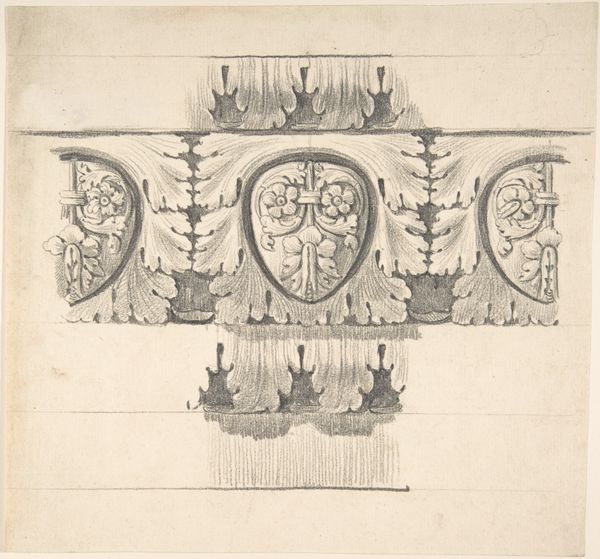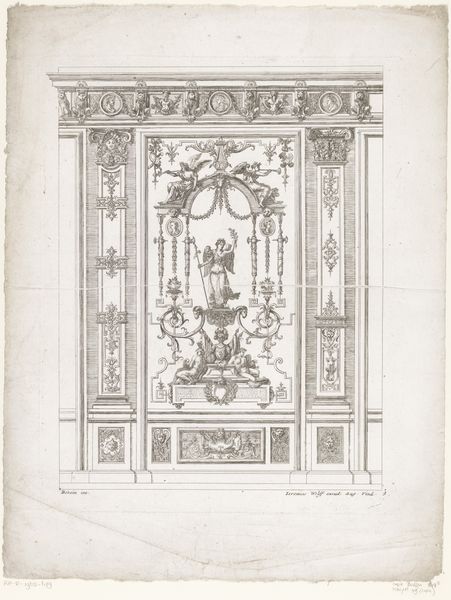
Dimensions: 4 5/8 x 5 1/16 in. (11.75 x 12.86 cm) (sheet)
Copyright: Public Domain
Curator: Let's examine this engraving from around 1594, “Design for Tankard With a Landscape” by Paul Flindt the Younger. The medium is described as both drawing and print. What are your initial thoughts on its composition? Editor: It's incredible to think this detailed work is meant for a tankard! The swirling lines and the landscape within feel quite dynamic, almost contrasting with the rigid form of the tankard itself. What draws your eye as you analyze it? Curator: I'm particularly interested in the interplay between the geometric structure of the tankard and the organic forms decorating it. Notice how the rigid lines defining the tankard’s shape are countered by the curvilinear patterns of the foliage and the swirling motifs around the landscape. The landscape vignette itself provides a focal point, encapsulated within the more structured design of the vessel. Editor: I see what you mean. It's like two different visual languages coexisting. Does that tension contribute to the artwork’s meaning? Curator: Precisely! Consider the linear quality of the engraving. The artist is primarily concerned with delineating forms, using line weight and density to suggest depth and texture, yet avoiding overt tonal modulations. Does the overall effect seem purely decorative or does it speak to the function of the object itself? Editor: It seems primarily decorative to me. The landscape doesn't really *do* anything for the tankard itself. Curator: You've zeroed in on something very crucial! The lack of overt functionality pushes us towards appreciating the artwork's internal coherence. It highlights the importance of form, structure, and the manipulation of visual elements within the composition. Editor: That makes a lot of sense. I see how analyzing the different lines and shapes independently is crucial to interpreting this print. Curator: Indeed. Looking closely at the image allows us to view the tankard's design, both for itself and how these elements coalesce within the composition, apart from how well it may have performed its designed task. It is through the artwork’s pure, unadulterated aesthetic properties that we derive meaning.
Comments
minneapolisinstituteofart about 2 years ago
⋮
Like many of the German artists in this exhibition, Paul Flindt (Vlindt) trained as a goldsmith in Nuremberg. He produced three model books in the 1590s aimed at the professional goldsmith trade. Drinking vessels like this tankard were a specialty. Flindt was the most prolific of the Punzenstecher--artists who created ornament prints with a goldsmith's punch instead of an engraver's burin. The result is a design made of tiny dots.
Join the conversation
Join millions of artists and users on Artera today and experience the ultimate creative platform.
